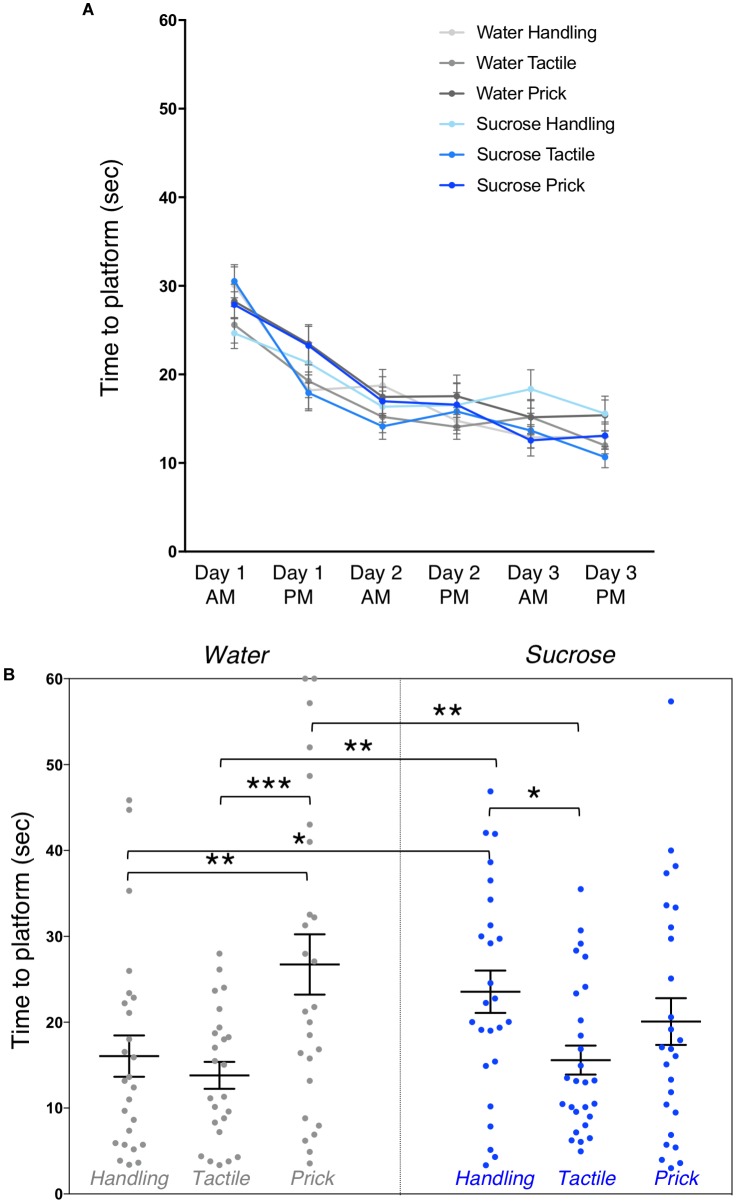FIGURE 4.
Effects of treatment and intervention on short-term memory in adulthood (Morris water maze test). (A) Training. Morris water maze learning curves are shown from testing day 1 to day 3. All groups learned to locate the platform over their six trials (p < 0.0001), but there were no significant differences in time to learn over days between experimental groups (p = 0.57), or interaction between trials and groups (p = 0.13). (B) Short-term memory. Group comparison of adult mice time to reach the area where the platform was during training during the first testing probe (1 day post-training). Compared to adult mice in the Water/Needle-prick group, mice in the Water/Handling (p = 0.003), Water/Tactile (p < 0.001) and Sucrose/Tactile (p = 0.002) groups took significantly less time to locate the “platform” on the MWM test. Compared to mice in the Sucrose/Handling group, those in the Water/Handling (p = 0.04) and Water/Tactile (p = 0.01) and Sucrose/Tactile (p = 0.02) took less time to locate the “platform.” Data presented as scatter plots with mean ± SEM; horizontal bars represent mean values; black asterisks and bars denote statistical significance using ANOVA. n = 24–27 per group. ∗p < 0.05; ∗∗p < 0.01; ∗∗∗p < 0.001.

